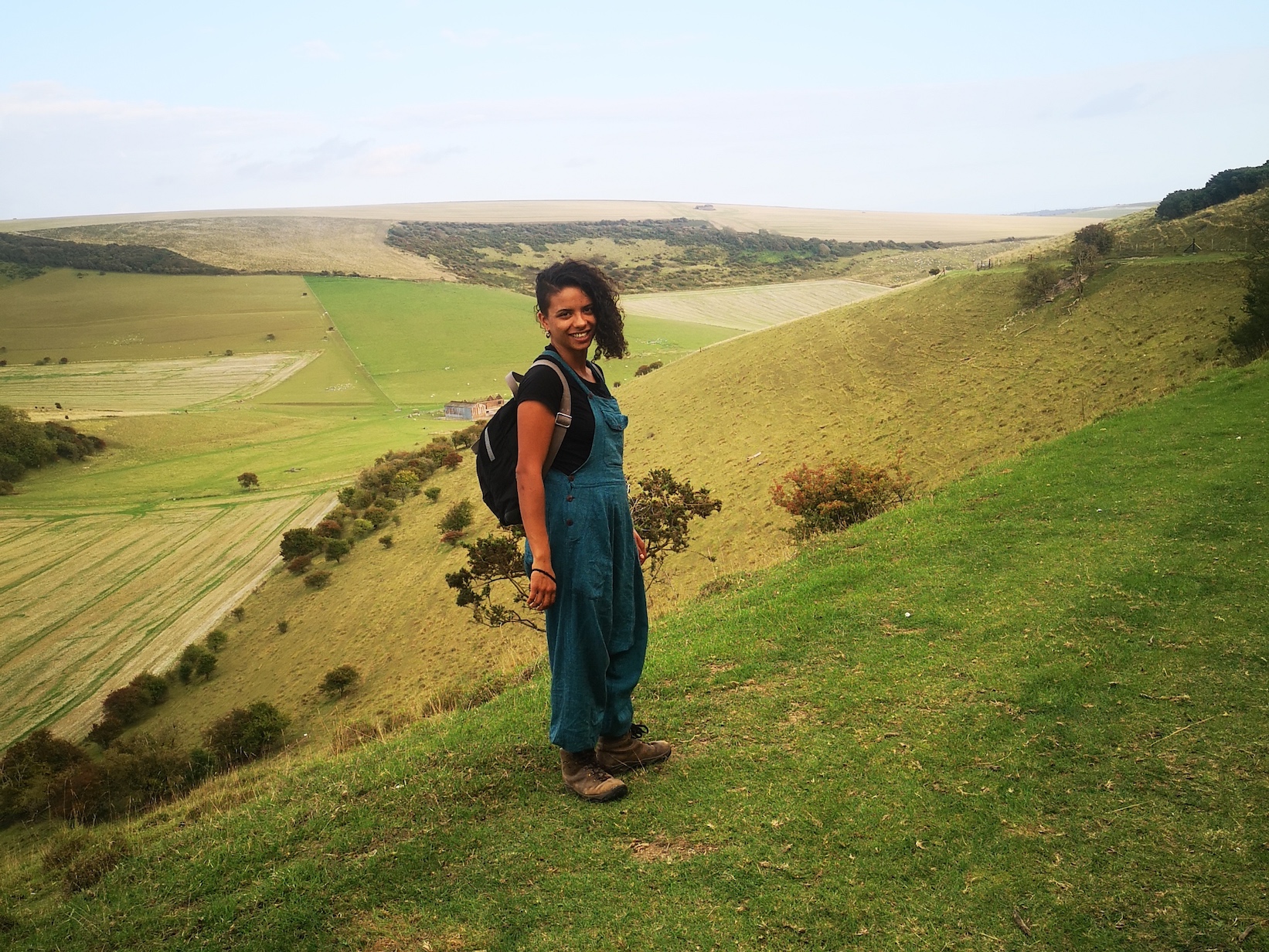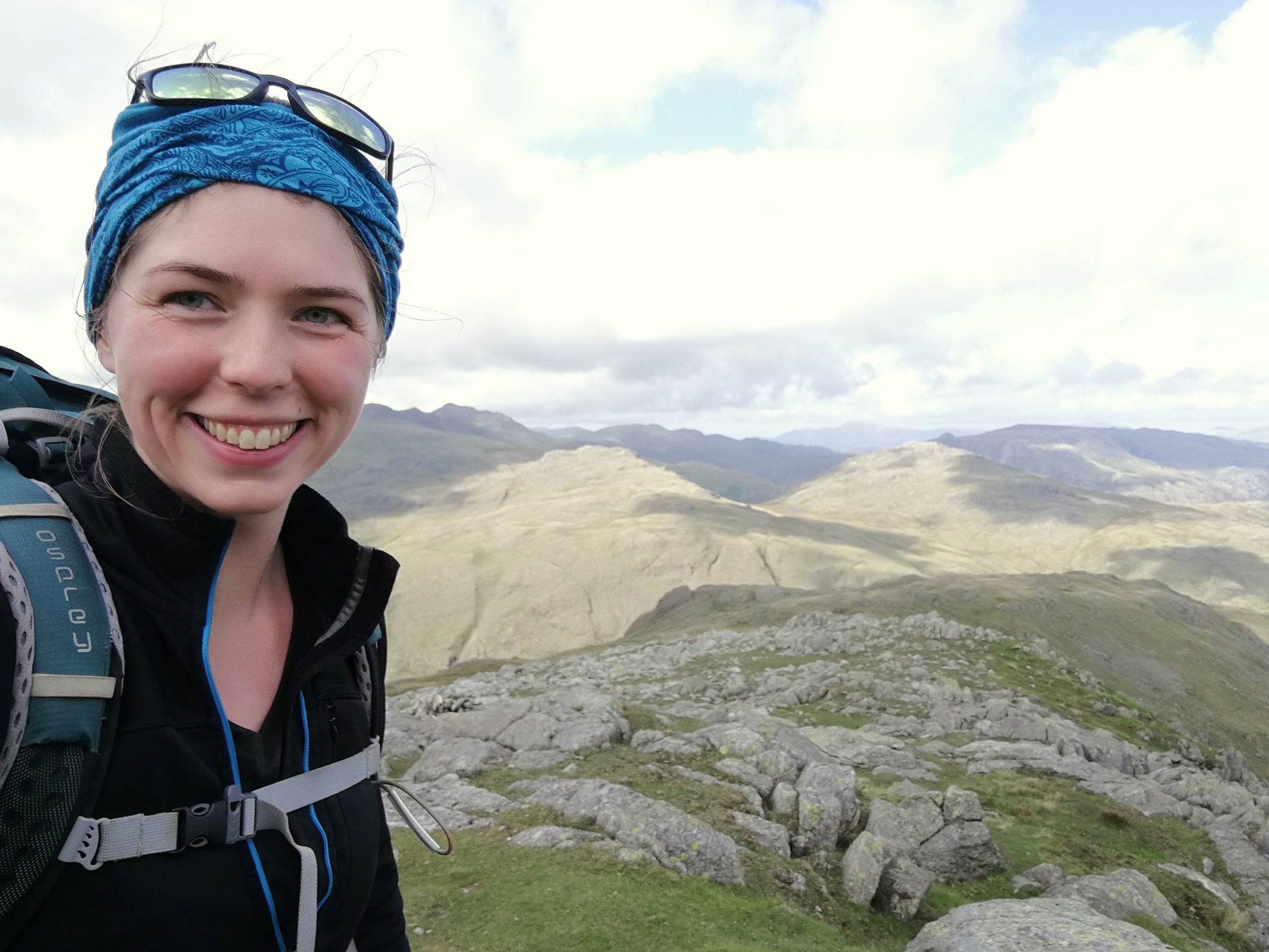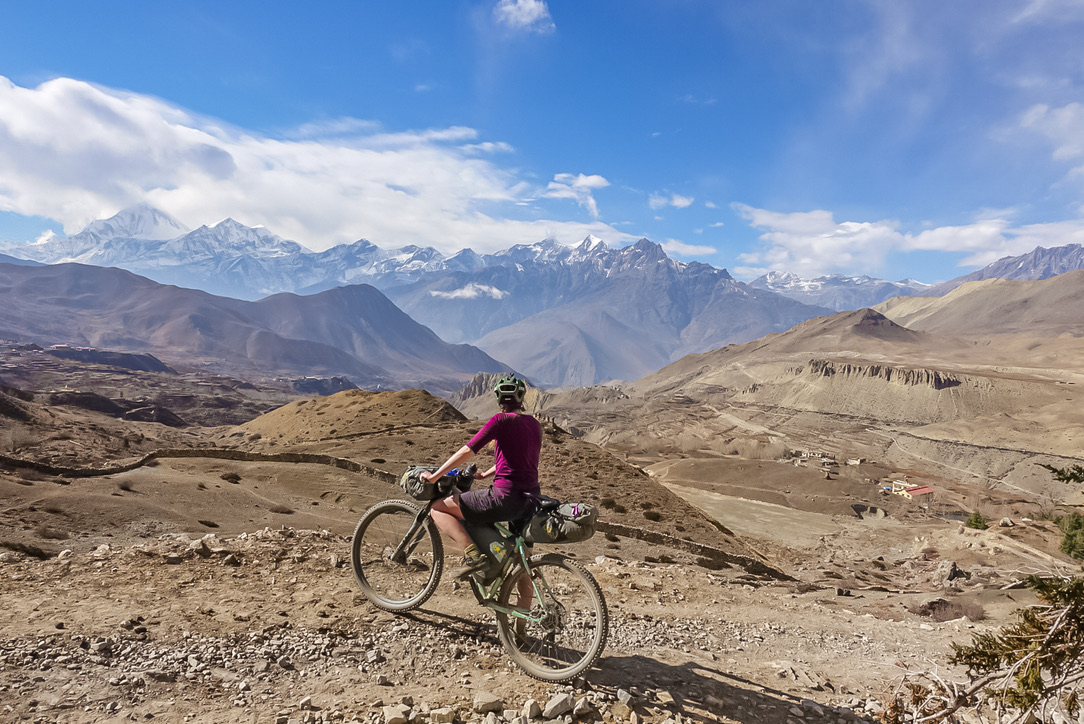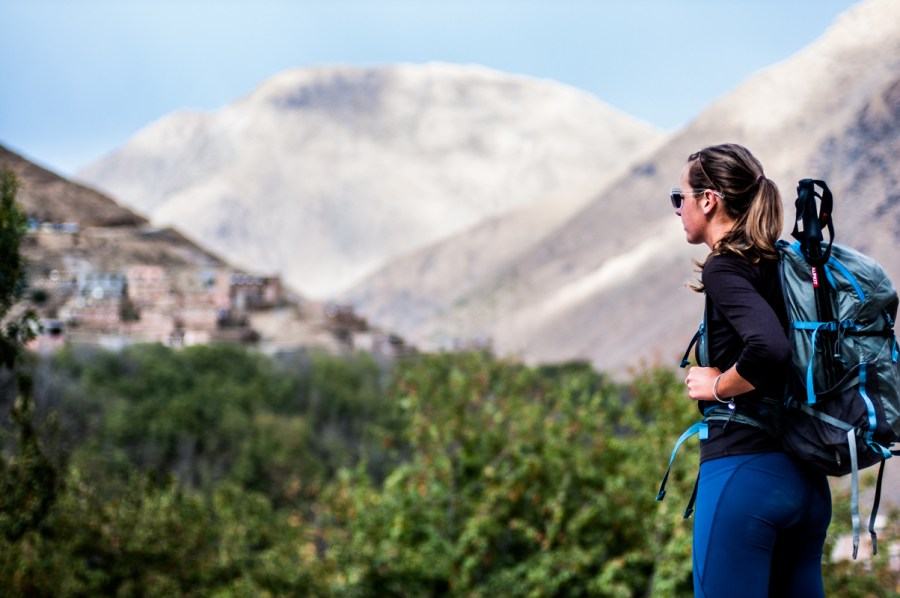Is the outdoors a safe place for women? Hanna Lindon asked female walkers and adventurers to share their perspectives.
According to recent research, 97% of UK women aged between 18 and 24 have been sexually harassed. The majority of harassment – 80% – occurred in public spaces. While harassment can include everything from wolf-whistling to unwelcome approaches, many women experience more violent behaviour – one in four have lived through sexual assault or attempted sexual assault. It’s no surprise that three-quarters of women report anxiety about exercising outside, particularly in the dark.
As hillwalkers, of course, exercising outside is what we do. Our adventures frequently take us to remote environments with no mobile phone signal. We often hit the hills solo, at night, and with the intention of sleeping outdoors – sometimes alone or in communal environments with strangers like hostels or bothies.
But going back to the research, a recent study estimated that only 20% of participants in mountain sports are female. How much is the fear of harassment and male violence in common outdoors scenarios to blame for that stat? With the recent horrific murder of Sarah Everard putting the spotlight on male violence against women, we asked a range of women for their perspectives.
Main image: Jenny Tough in the Atlas Mountains of Morocco. Photo: Callum Stuart
Risk assessment
The majority of female hillwalkers who shared their thoughts with us for this article said that they felt safer in the outdoors than in almost any other public environment. However, many added that they still take the threat of male violence into account when heading off on solo adventures.
“When hitchhiking and wild camping through Europe in 2019, the constant threat of male violence and harassment greatly influenced my approach,” says writer Josephine Hall. “I had a tracking app so people at home could see where I was at any time, and I took photos of car number plates before getting in and texted them to someone. There were quite a few times where, if I’d been with a male companion, I would have wild-camped. But because I was alone, I felt I had to go to a campsite to be safe.”

Josephine Hall in the South Downs. Photo: Josephine Hall
When we asked our female Twitter followers to share their experiences, many of them had experienced intimidating incidents or factored the threat of violence from men into their planning.
“Knowing and feeling the risks doesn’t make me not go and do it anyway, but it can take the joy out of it sometimes,” said @ElvyCurious.
“I feel safer in the ‘outdoors’ than I do in cities, but still it definitely influences how I feel and act,” added Rachel Sarah. “As somebody who goes on a lot of solo adventures there are precautions I take without even thinking and bad experiences I’ve had over the years. The fears and bad experienced don’t necessarily stop me from travelling along, but many nights I’d had have been tinged with a bit of fear. One night in my roof tent I even loudly pretend talked to an imaginary boyfriend because I was scared somebody was outside.”
Women from BAME backgrounds may experience a compounded risk of violence. On top of that, they are less likely to be believed if they report it – one study found that black women are less likely to be perceived as harmed by harassment.
“In some European countries, it was the combination of being female and black (mixed race) that heightened the risk of male violence,” says Josephine. “This is probably true for the UK too. Seeing an unexpected white man when I am out and about alone in the outdoors, could be very nerve-wracking.”
Avoidance tactics
Some women told us that there were outdoors scenarios they would avoid completely because of the threat of harassment. In particular, most agreed that solo bothying trips were a no-no.
“I think the only different action I take [due to being female] is not planning to stay in bothies when I’m out walking by myself,” says long-distance walker Kat Young. “It feels like a more confined and intimate space than wild camping, for example, and I’m not comfortable sleeping near unknown men when I’m by myself, and when there’s only one (blockable) escape route. Realistically, no matter how hard I work out, a man will almost always be able to physically overpower me. Whilst I don’t usually frame myself as a victim, that kind of power imbalance can be more dangerous without witnesses. Of course, it’s not all men – but I have no way of knowing which men.”
Our Twitter followers agreed. “Tend to feel quite safe in the middle of nowhere!” said Cat Webster. “Exception is bothies which I avoid solo. Have had encounters which while merely annoying/amusing with a group of friends would have been pretty unpleasant alone.”

Kat Young in the Lake District. Photo: Kat Young
Harassment in the ‘workplace’
Over half of women report experiencing harassment in the workplace – and that’s still a risk when your office is the great outdoors. Wild swimming guide Suzanna Cruickshank reports several incidents over the course of her career, ranging from extreme misogyny on a 2011 Mountain Leader training course to intimidating behaviour by customers.
Suzanna has also experienced harassment from men while wild swimming. “I’ve had instances of a man hovering by my clothes whilst I was swimming and watching me in an openly creepy manner, a man engaging me in conversation whilst I was in the water (and clearly naked) and insisting he would turn away whilst I changed, and one who came and sat next to me, right next to me, whilst I was changing. These all occurred in reasonably remote but popular wild swimming locations and it does concern me that women might feel they can’t enjoy them as freely as men might.”
“Where’s your boyfriend?”
While incidences of violence against women in recreational outdoors scenarios are thankfully rare, sexism is an issue that many female hillwalkers face on a regular basis.
“I’ve experienced varying degrees over the years,” says Ali Ogden, coordinator of the TGO Challenge, an annual backpacking event supported by this magazine, where hundreds of participants make their own routes across Scotland. “It goes from casual, unintended sexism – ‘aren’t you brave to be in the hills by yourself’ – through to the more overt ‘where’s your husband/ boyfriend?’ and occasionally deeply pleasant inuendo. I’ve even had a stranger say on a hill top: ‘Oo, so you like to be on top then.’”
Ali’s fellow coordinator Sue Oxley says things have improved hugely in the past few decades. “Go back 40 years and I was seen as some kind of wonder woman climbing hills all by myself without a man to help me.” But it’s an attitude that many women still experience today.
“Truthfully, I don’t think about male violence when hiking and cycling but I have had several experiences of being put in my place by men as though I have no business being outdoors or on the fells without a man in charge,” Sally Welsh told us through Twitter.
Skewed perceptions
While there’s no doubt that harassment is a risk in the outdoors – as it is in almost all walks of life – most women still told us that they feel safer striking out alone in the hills compared to more populated environments.
“Of course all women do approach solo adventuring differently, in the same way that women approach all solo activity outside their house differently,” says adventurer Jenny Tough. “We live in a world where women have to make considerations for walking home in their own neighbourhoods where they live and work, so it isn’t really any different planning a big trip – we are always working on a level of being under threat. That said, most women I’ve spoken to share the opinion that we feel so much safer walking alone in the mountains than we do in a city, so once we’re out there it can be a really happy place for us and feel like a nice break. Somewhere we can be free – for example, it’s the only place I’ll ever run in just a sports bra and shorts!”

Jenny Tough in Nepal. Photo: Jenny Tough
What angers Jenny is the persistent idea that women put themselves in greater danger through backpacking and solo adventuring than they do by going about their daily routine. Is this protectionism itself a form of sexism?
“It really upsets me how often I hear women (myself very much included) being warned about backpacking and adventuring alone,” she says. “I think it’s incredibly unfair, and also I think it has a lot to do with a skewed perception on women’s safety – we truly are in more danger on our regular routes at home, walking home or out for a jog, etc. Nobody has ever told me not to take a late train to London alone, and yet I have been told countless times not to go camping in the vast wilderness by myself. And which one is statistically a bigger threat..?”
Could there be a danger that less experienced female hillwalkers could be deterred from solo adventuring by these concerns? Mountaineer Rebecca Coles certainly thinks so. “(Is) this actually something that women starting out are more worried about?” she asks. “And it becomes a barrier to participation.”
“Nothing but kindness”
Several women contacted us to share the positive experiences they’d had outdoors.
Jenny Henderson said she had “felt nothing but kindness from fellow walkers – female and male.”
“I’ve never worried about this at all,” added Chrissie Crowther.
Even those whose experiences of solo adventuring hadn’t always been positive had encouraging thoughts to share. Josephine Hall said: “There is a lot to consider – as a woman, as a black person, as someone with a long-term health condition – before I go adventuring. But, of course, always so much to gain as well… and I hope I encourage some people to go for it, despite the aspects of their identity that can sometimes make life feel restricted.”
READ MORE: Views from the TGO Challenge
The TGO Challenge (an annual backpacking event in Scotland supported by their magazine) is popular with solo backpackers – both male and female. As part of this article, we spoke to event coordinators Ali Ogden and Sue Oxley. Below they share their further thoughts on the risks and reassurances associated with the Challenge.
Is the threat of harassment and male violence against women something you consider while planning the TGO Challenge?
Ali: “We risk assess the Challenge every year. While not specific to the Challenge, unacceptable behaviour is a risk as there’s a whole host of unacceptable behaviour that’s inherent in life and society. We both recognise that it is a small but persistent minority of men who recurrently offend and that a vast majority behave appropriately and respectfully.”

A group of women on the TGO Challenge
Have you ever had any problems on that front?
Sue: “There was a huge amount of sexism in the early days but that’s much improved. The Challenge is really all about camaraderie – people being equal and helping one another when needed. In a way, it’s a better place!”
Do many solo female walkers take part in the Challenge?
Sue: “We have far more women now on the Challenge than we used to – far more solo women too, and that’s representative of walking in general. Forty years ago, even seeing two women walking in a pair would have been unusual. A woman on her own was pretty much unheard of! So things have come on… slowly.”
Do you think women feel more comfortable taking on the TGO Challenge solo than they might do walking in the hills alone and unsupported?
Ali: “The Challenge offers quite a safety net for all participants including solo women. The core of the event is that support for one another. Every year there are stories of people going out of their way to help someone else. We also have systems and procedures in place so people can raise issues with us, including via Challenge Control during the event. We listen, we believe, we will support and, if necessary, we will refer people to the police. That’s a layer that isn’t there for anything that isn’t an organised event like this.”








